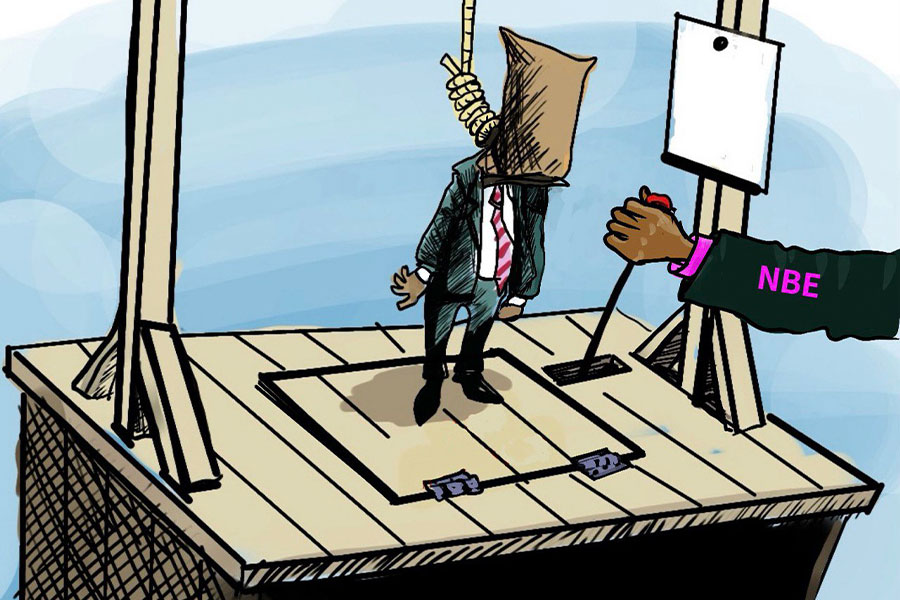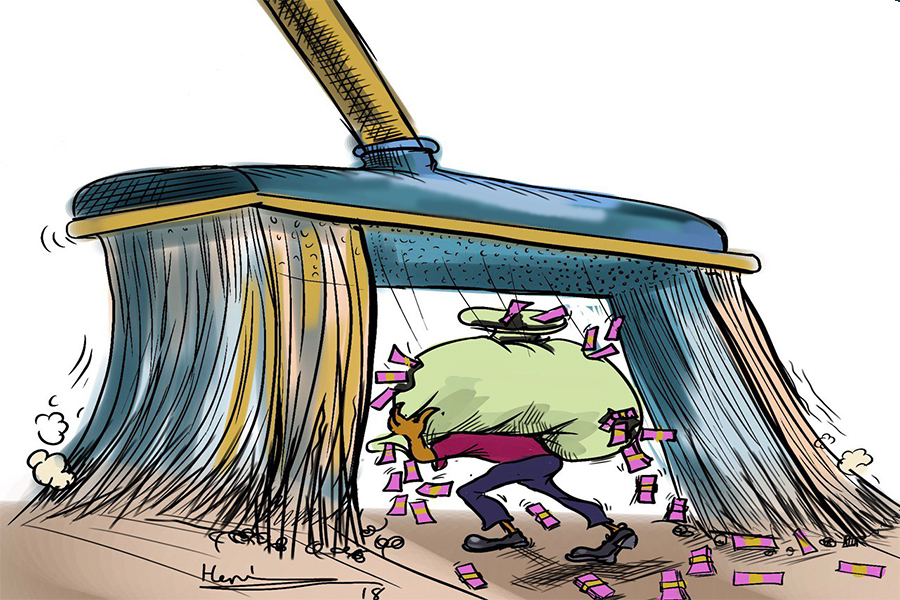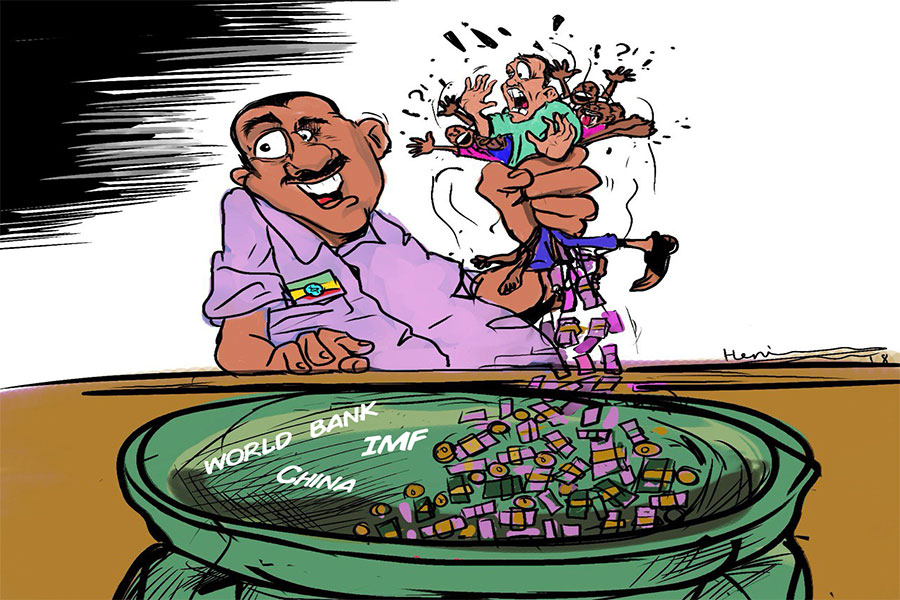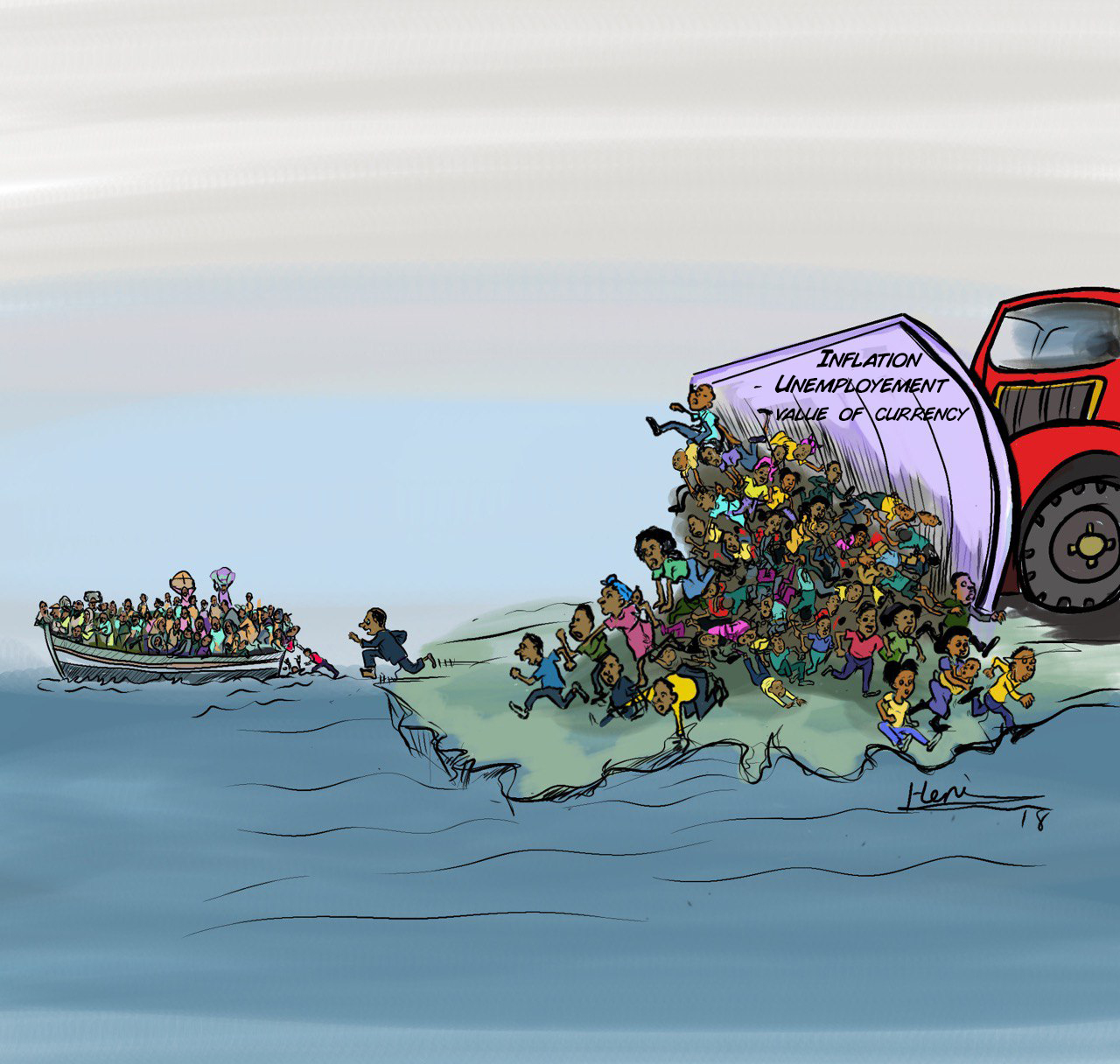
Photo Gallery | 180255 Views | May 06,2019
Oct 11 , 2025.
Ladislas Farago, a roving Associated Press (AP) correspondent, arrived in Ethiopia in 1935 expecting the war between Ethiopia and Italy, provoked by skirmishes at Wal Wal, would have started earlier than his arrival. What he found, he later wrote in his memoir, “Abyssinia on the Eve”, was “a land of unlimited impossibilities”.
Nearly a century on, the phrase fits again. The Horn of Africa is sliding into a slow-motion emergency, if not the prospect of catastrophic war. Nowhere is the strain heavier than in Ethiopia, the continent’s second-most-populous country. Once touted as an economic wunderkind, the country is now exporting not only coffee and oilseeds but, above all, its own people.
Queues curl through the departure halls at Bole International Airport. Farther east, migrant trails wind across Djibouti’s desert and Yemen’s badlands. Every line tells the same story of a country bleeding out its young. This exodus is more than a scatter of personal tragedies. It is the visible symptom of a deeper malaise. Unless Ethiopia’s contemporary leaders strike an inclusive political bargain, the flight of brains and the desperation of people with low incomes will become the defining current of the country’s modern history.
The headcount looks benign, judging by the net migration rate officially put at a mere -0.1 migrants per thousand people. On the surface, they may appear nothing more than a trickle. In reality, a torrent flows below the statistical surface. The population, estimated at over 100 million, has already shed 2.5 million to three million citizens, edging to three percent of the total, now living abroad. Roughly a quarter of a million of them depart every year. In the three years beginning in 2017 alone, 400,000 trekked irregular routes to the Arabian Peninsula, gambling on smugglers, storms and rifle sights.
Saudi Arabia hosts the largest Ethiopian community, with roughly 750,000 as of 2017, of whom six in 10 have slipped in without paperwork. Another close to 300,000 have settled in the United States (US). South Africa shelters about 120,000 people, more than 90pc of whom are outside official channels. Behind each figure lies a bereft family, an understaffed village school, a hospital short of nurses because its best graduates are stacking beds in Jeddah or street hawking in Pretoria.
Ethiopia has ploughed billions of Birr into universities, only to watch its new professionals depart. The Labour Ministry, in a startling half-year snapshot, counted over 181,000 skilled workers, including engineers, nurses, and architects, leaving for overseas jobs. Remittances were meant to offset the loss, yet in 2023 they totalled a paltry 539 million dollars, according to www.theglobaleconomy.com, a mere 0.36pc of GDP, a sliver of the 5.13pc global norm and barely a third of the peak reached in 2014. Average remittance inflows amount to around 4.5 dollars per Ethiopian each year.
A trained nurse is worth far more in a ward than that in a Western Union slip.
Why do Ethiopians choose risk over roots?
The reasons are neither mysterious nor hidden. They are simply ignored by those in power. War and militarised conflicts are foremost. The brutal two-year civil war ignited in the Tigray Regional State, which claimed hundreds of thousands of lives and uprooted millions, has been followed by violent conflicts in the Amhara Regional State, and exacerbated the insurgency in the Oromia Regional State. For many young men, the threat of arbitrary arrest, forced conscription, or ethnic reprisals turns migration into a necessity. Political repression and widespread insecurity have hollowed out what faith remained in state institutions.
Neither do macroeconomic headlines offer much comfort. The GDP may have expanded by a brisk 8.1pc in 2023/24, yet the boom rarely touches household budgets. Urban youth unemployment sits at 27.2pc, twice as high for women, and nearly 40pc of Ethiopians subsist on less than a dollar a day. The official poverty rate, 32pc, tops the sub-Saharan average. Even graduates queue for cleaning jobs in the Gulf states.
The Brewed Buck (Birr) has sagged, losing nearly 150pc of its value against the dollar since August 2024. Bread and fuel prices in Addis Abeba have skyrocketed in the past two years. Teachers drive ride-hailing cars after class; doctors who strike for wages are told by officials to “leave if they’re unhappy”. Many appear to have accepted the advice.
Demography magnifies the stress. Seventy percent of Ethiopians are under 30, and about two million new job-seekers join the labour market annually. Rural land, once a guarantee of subsistence, is scarce and depleted, pushing the young toward towns that hold too few vacancies, or toward departure lounges. In the outskirts of Addis Abeba, where many have migrated from rural areas to find cheaper accommodations, frustrations crackle like static.
Nowhere is the peril clearer than on the eastern route. A trek from Ethiopia through Djibouti or Somalia, across into Yemen, and up to Saudi Arabia. In the first half of 2025, monitors logged 238,000 outbound crossings on this corridor and counted more than 350 deaths. Each month, about 6,500 Ethiopians gamble everything for a chance at domestic work in the Gulf. A bilateral deal signed with Saudi Arabia in March 2023 promised half a million housekeeping visas for Ethiopian women. It regularised one stream while leaving migrants as exposed as ever to abuse, trafficking and legal limbo.
Migration, in turn, has become an enterprise. Travel agents and intermediaries hawk glossy dreams, charging fees that swallow a year’s income. The government, desperate for hard currency, touts overseas labour schemes as quick fixes to its balance-of-payments problems, as if people were mere parcels of export.
Policymakers may be tempted to swat at symptoms by enforcing border curbs, mounting anti-trafficking drives, and jailing smugglers. Such tactics amount to palliative care for a festering wound. The ailment is deep in the political arena. Ethiopians have been confronted with a grim reality at home where the social contract collapses, and violence and exclusion snuff out hope. A broad and earnest political settlement among elites of various shades of interest may restore trust.
The economy, likewise, should turn from headline growth to inclusive gains. Treating citizens as “human exports” may yield quick dollars, but squanders the engines of long-term prosperity. Social cohesion, frayed by years of patronage politics and sectarian conflicts, needs painstaking repair. A new civic compact should cherish diversity while knitting a shared identity, investing in education and health for all.
Absent such remedies, Ethiopia risks being judged not by its dams or its growth statistics but by the size of its diaspora. Talent will continue to seep away. The young will continue to trade farmland and lecture halls for desert tracks and cargo holds. Grand infrastructure may span rivers and gorges, yet the bridges that matter, between citizens and state, will crumble.
Migration will always be part of Ethiopia’s story. Students left for higher education abroad in the 1960s; refugees fled the Derg’s terrors in the 1980s; and today’s cohorts chase wages. But mass flight need not define the future. An inclusive polity, a fair economy and a social contract anchored in dignity and hope could entice the youth to stay, and to dream at home.
Current leaders, entranced by vanity projects, would do better to confer dignity with a degree rather than a boarding pass. Ninety years after Farago’s visit, Ethiopia can be a land of “unlimited possibilities”. The choice is between channelling the restlessness of the young into nation-building, or watching them march across deserts and high seas in search of prospects their homeland failed to provide. Anything less is not merely economic folly. It would be a betrayal of a generation and its history.
PUBLISHED ON
Oct 11,2025 [ VOL
26 , NO
1328]

Photo Gallery | 180255 Views | May 06,2019

Photo Gallery | 170452 Views | Apr 26,2019

Photo Gallery | 161476 Views | Oct 06,2021

My Opinion | 137267 Views | Aug 14,2021

Nov 1 , 2025
The National Bank of Ethiopia (NBE) issued a statement two weeks ago that appeared to...

Oct 25 , 2025
The regulatory machinery is on overdrive. In only two years, no fewer than 35 new pro...

Oct 18 , 2025
The political establishment, notably the ruling party and its top brass, has become p...

Oct 11 , 2025
Ladislas Farago, a roving Associated Press (AP) correspondent, arrived in Ethiopia in...